Picea Abies Nidiformis - the scientific name of a small pillow-shaped Christmas tree. This is a beautiful decorative plant. Many do not consider a tree, referring it to evergreen shrubs. Even an adult spruce nidoformis only slightly exceeds the mark of one meter in height, having received the name of the dwarf. An unusual shrub is unpretentious in care, but it can become a highlight of any landscape composition or successfully add it.
Description spruce varieties Nidformis
Nidiformis's homeland is considered to be Germany. It was revealed relatively recently, about 100 years ago. Dwarfice has several distinctive properties: lowerness, abundant branching, short housing, spherical shape of a bush. By reaching the age of 4, it usually resembles a tennis ball located on the lawn. Young plants are practically not fruit. Only with age they appear bumps.
This variety ate is a slow shrub flattened or rounded shape. Plants are sometimes called nests. This is due to the shape of young shoots in the Christmas tree. They arched up, creating a clearly pronounced shape of the nest. With the age of Krone, the shrub becomes asymmetric, its regularity is lost. The needles are thick, short, does not exceed 1 cm long. The color of ate varies from dark to light green. In the spring, young paps have a significantly different shade. For comparison, we offer photos of the spruce nidoformis in the spring and summer.
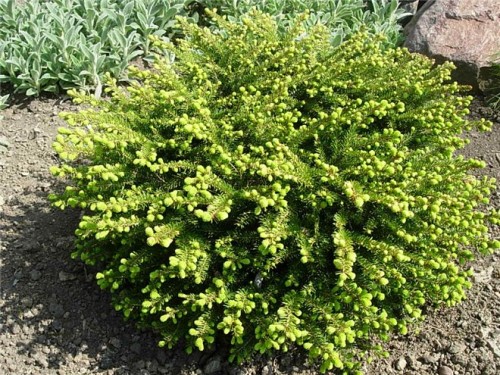
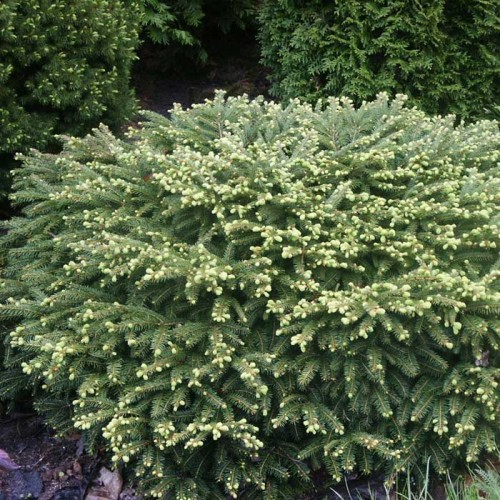
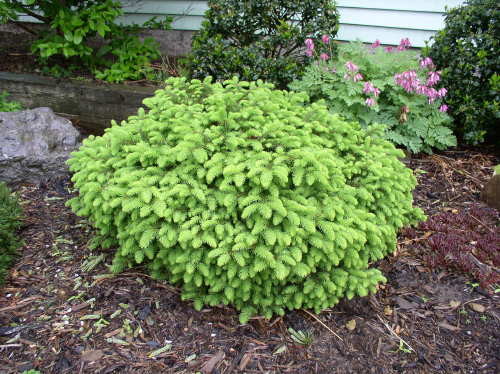
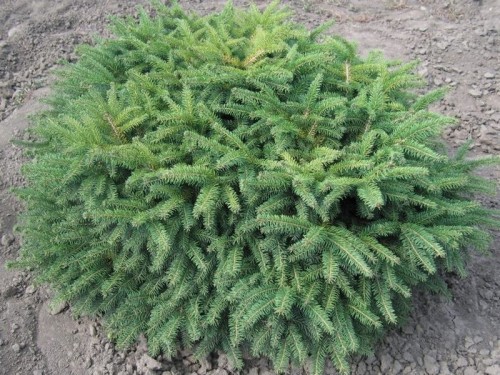
The slow growth and frost resistance of the Nidiformis variety made it popular among the gardeners of the northern and medium regions of Russia. Young plants, as true representatives of evergreen plantings, can get sunny burns in early spring. 2-3 years after landing for shrubs, you can no longer be afraid. The height of the spruce nidoformis of the solid age is 1.3 m. With such a height in diameter, the plant can reach 2.5-3 m. The spruce is growing annually by 5-6 cm in width. In height, it moves slower - 3-4 cm per year.
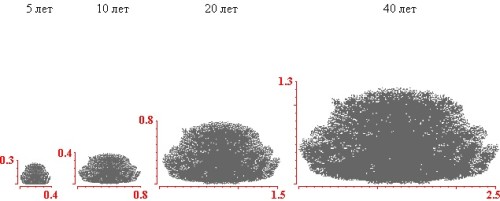
Features of the choice of place and soil landing
Before buying a seedling, Eli ordinary Nidamis should be made that there is a suitable place on the site. A peculiar structure of the shrub leads to its strength to the width. But the plant remains short. The plant under the planting of the ate must have at least 3 m wide. The slow growth of a young shrub allows in the first years of his life to take the free area by annual plants. Looking down perennials is not desirable. They will not only be taken from ate the desired surface, but also can create an undesirable shadow.
Nidiformis grade representatives are preferable to place on fertile acidic or alkaline soil. It should be moderately wet and well drained. The optimal place for landing will be slightly darkened territory. The fir is sensitive to the lack of light.
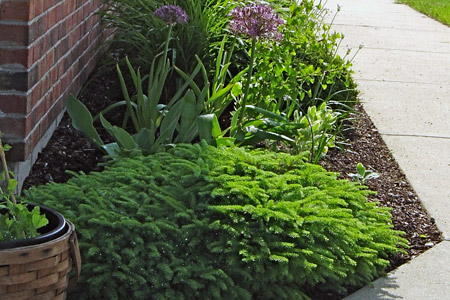
Dwarf shrubs do not tolerate pulp and soil seals. Do not land them in places of frequent movement of people. It is better to choose a place away from tracks or areas of active recreation. The root system of fir nidiformis is close to the surface. Plant landing in heavy soil can lead to insufficient nutrition and oxygen starvation. On fertile land, the ate will be the opportunity to go deep into the ground and avoid illness.
When choosing a landing site, it is worth paying attention to both groundwater running. The plant does not make proximity to them. A spruce can die and will inevitably die. With intimacy of groundwater, drainage will be required. It usually consists of a crushed stone layer at 10-20 cm.
Plant landing technology
Planting ate nidoformis differs little from other coniferous plants. Shrubs older than 2-3 years be sure to transplanted with a lore land or from containers. Such technology prevents damage to the resulting root system and allows you to maintain mycariza formed on it - vital fungi for coniferous plants.
Preparation of pit, drainage and land mixture
The diameter of the landing pit should be 1.5 times more coma of land. Its depth will depend on the composition of the soil:
• 100 cm - for clay and chernozema (20 cm is assigned to drainage);
• 80 cm - under sand or sand.
The coniferous plants of the variety nodormis the root system surface. Therefore, to dig a pit deeper than 80 cm no sense. Fertile soil below this feathel will not be used practically.
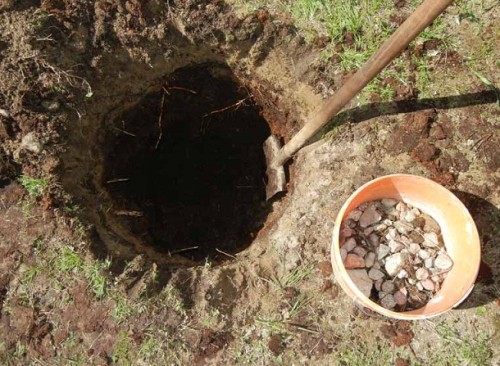
When planting a pillowless shrub on clay, heavy soil, it is worth putting drainage on the bottom of the prepared pit. Usually the crushed stone or broken brick, layer up to 20 cm. From above, it is recommended to pour sand on it to avoid water stagnation in the soil. For sand and soup lands do not need drainage.
To fill the landing pit, an earth mix is \u200b\u200bprepared. For this purpose, it is possible, of course, to use the land extracted during its digging, but it will not provide an optimal environment for rooting the plant. Special mixture can be easily prepared independently. There are several options for its composition. It is important to know the correct ratio of components:
• peat + sand + nervous land - 1: 1: 2;
• Chernozem + Sand - 1: 1;
• Spring + Chernozem - 1: 2;
• Chernozem + pine sawdust (chips) + sand \u003d 2: 1: 1.
Advice! The planting material should be purchased from proven sellers. It is better that the root system is closed in a container or walked with a large land, wrapped burlap. Most often, manufacturers in the container have already added prolonged fertilizer. About its presence should be inquired before buying. Otherwise, it is advisable to put 10 g of nitroammofosk in the landing pit.
Plant landing work
When the preparatory work is completed, you can proceed to replant. Very simple technology involves several phased actions:
1. It is abundantly watering the plant so that the land is well soaked in moisture.
2. Spruce goes into the pit without removing burlap. After 2-3 years, she will decompose herself. This also applies to the grid. When disembarking plants from the container, it must be removed.
3. The shrub is installed in the right position: the most beautiful side of the plant is selected and placed in advance, the trunk is aligned vertically relative to the horizon line. Before graduation, the plant should be in this position. To avoid shift, you can use anyone to help.
4. Next, the landing pit is falling asleep by the trained earthy mixture. It is done by parts. Every 20-30 cm Balloon of the Earth is spilled and tamper evenly on each side. It is important to check the absence of emptiness on the sides and under a room.
5. Fly the mixture stands to the top level of the coma. Root neck must be on the soil line. It is not necessary to plunge it, as the bark on the trunk will begin to die, the nutrients will stop to the plant and the fir will die. It is important to take into account the further shrinkage of the soil.
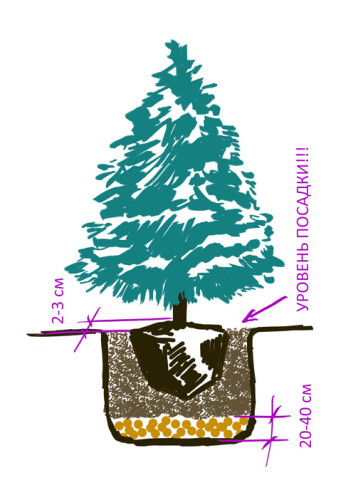
Sustainer watering rates during transplantation
The older the transplantable fir, the harder it is to adapt in a new environment. It has a small root system, so frequent watering is required during the first year. For the spring-autumn period - 1 time per week, in the summer - 2 times.
The irrigation rate on one plant depends on its size:
• up to 1 m - 10 liters of water;
• Over 1 m - 15-20 liters.
Additional measures of the first year
In the first week after planting a fir, you need to pour the root formation stimulator. A good result gives spraying branches and needles during this period. You can use the solution "Epin" or "Zircon". One ampoule of the first is divorced by 5 liters of water, and 1 ml of the second is 10 liters. Spraying the plant should be abundantly enough to make the solution on the needle. Treatment of shrub epic allows you to increase the protection of the plant from the effects of ultraviolet in early spring.
It is recommended in the first year of life to looser to a tenezatic film in the period from February to April. You can use the construction grid of green with a shallow cell. This will protect the plant from Spring Burns. In the first year of life, the plant receives little nutrients due to a trimmed root system. The needles can be treated in the sun, which will lead to its damage.
The dwarf ate and other coniferous plants will evaporate all year round. In the spring of its root system, under the cover of the frozen land, and the sun is already very hot. Caps' drying occurs. To help the plant, you need to hurt part of the soil under it. A spruce can be rooted to absorb the resulting moisture. Watering is worth starting from the middle of March. It is necessary to use warm water and cut off the snow from the plant trunk for more quickly thawing the soil.
Advice! Starting the feeding of a dwarf ate is recommended from spring. This uses special fertilizers "for conifers". It is not allowed to feed with humid, urea or manure. For the plant it will be fatal!
Caring for dwarf
Such a plant is suitable for landing in any climatic conditions. But there are some features of the care of fir Nidamis. Since this variety is a dwarf, the shrub has a pretty thick crown of an unusual form. It is located close to the surface of the Earth, almost lies on it. Spruce can be sacrificed under the cover of snow, mushroom infections, disputes. To avoid such problems, it is worth landing in places with a sufficient amount of sunlight.
It is necessary to regularly need a regular herb. If the fir is littered with vegetation, it can die. It is advisable to raise the bottom layer of branches for several centimeters above the ground to avoid touching it. You can remove part of the stroke as the bush is growing. It is important to provide wind and sun access to the inside of the crown. For this purpose, the left branches and old needles are removed. They usually accumulate inside the thick crown. Instead of mechanical chute, chemicals can be used. Plants are processed by fungicides and insecticides.
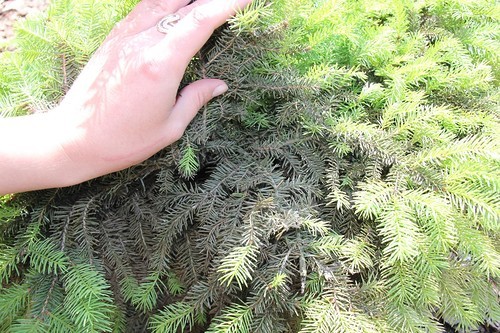
Among possible problems often encounter a defeat by a web tick. In combating it, we need processing with special chemicals. Dwarfice is demanding of soil moisture. She does not tolerate drought. In the summer, mandatory watering every 7 days of 1-1.5 buckets per plant. It is recommended to carry out regular sprinkle and shallow moaning of the soil (by 5-7 cm).
The needles of the variety Nidformis refers to frost-resistant plants. But at a young age, the plant is desirable to wrap in early spring. For winter, you can use a frame for maintaining a shrub. There is the likelihood of the branches under the weight of snow cover. Dwarf ate, like any coniferous plants, need mulching. This is an important agronomic reception that allows you to protect the root system from freezing in winter and reduce the evaporation of moisture in the summer. Mulch prevents the growth of weeds. After natural decomposition, it gives feeding roots and prevents the soil seal. For mulching, it is possible to use the bark of coniferous plants in crushed form, a wet peat, leaf distillation, cedar nut shell, garden compost, and other mulch layer is 6-8 cm.
Strong trimming of the dwarf ate is used only in cases of using it as a living hedge. In other cases, only sanitation is carried out, patients and dry branches are removed. During the period of active growth of the plant, it is worth removing the dominant shoots and shortening strongly speakers. This will make the crown of the correct form.
The best ideas for using a decorative shrub
Spruce Nidoformis in the landscape is very widely used due to its unusual crown and low-speed. Evergreen shrub retains decorative properties all year round. It looks spectacular with a single disembarking. Can decorate and add many decorative compositions.
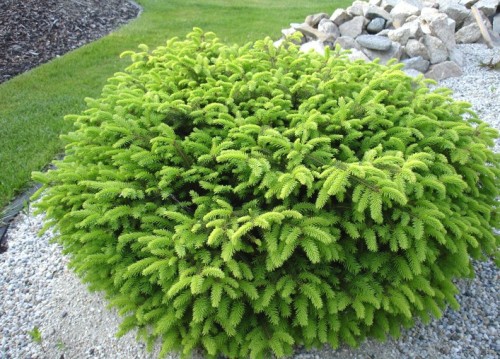
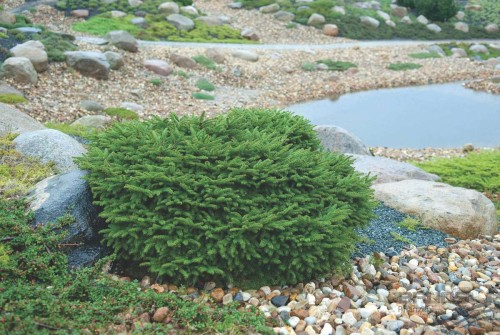
Dwarfice is often used to create a homogeneous carpet. Dense "nests", landed close to each other, allow you to create a beautiful evergreen oasis in a large area.
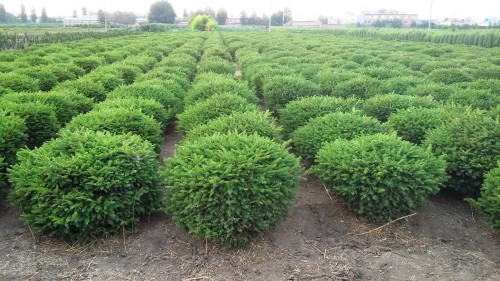
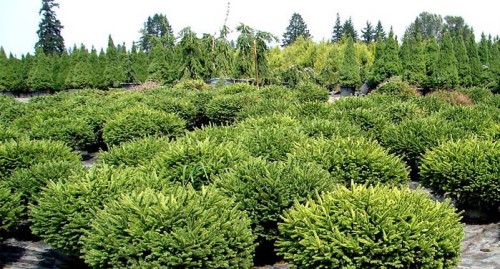
GROUP FOODINGS OF CHILDS NOTIFATIONS is used to create various decorative compositions in small household gardens. They can only consist of representatives of this eli combined by a specific pattern. The combinations of both 2-3 shrubs and large quantities are well looking at well.
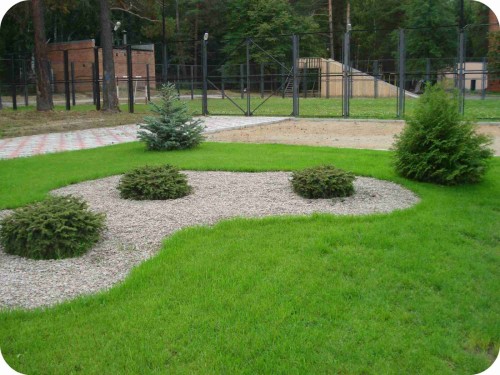
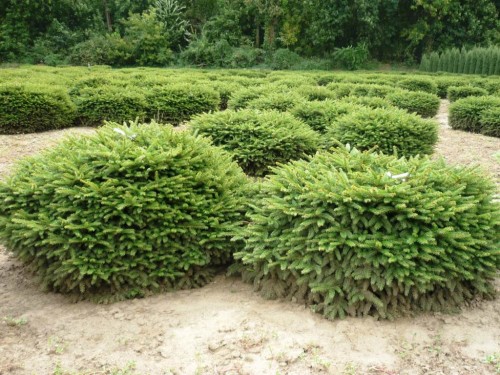
If there is no place for disembarking in the open ground, you can put it in the desired location directly in the container. Such a reception is good for solitary decoration and for group. Combine shrubs in containers can be among themselves with other plants. Most often, they are combined with other representatives of conifers. Container compositions are a great option for the estates, near which there is no sufficient land under the landing.
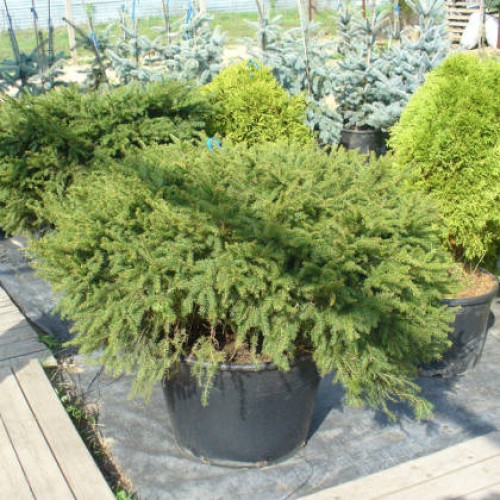
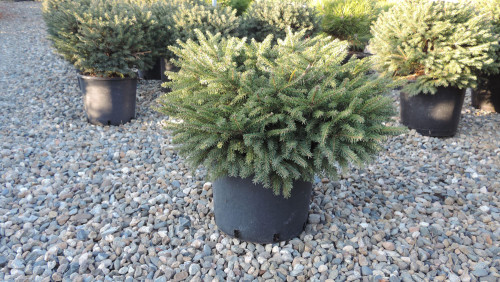
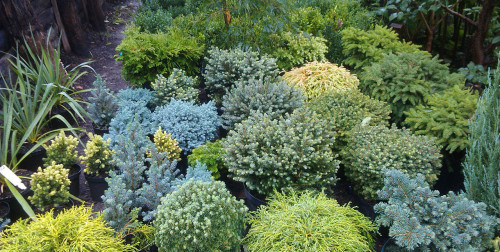
Dwarf ate are often used to form rocky gardens, alpine slides. They are perfectly combined with other coniferous plants, for example, with juniper scaly. Practically indispensable such ate in the art of bonsai. Unlike tall needles, shrubs do not need to constantly starve hunger and strongly cut to create a form, holding the plants on the verge of death. Little ate velia require minimal intervention to give them the desired decorative species.
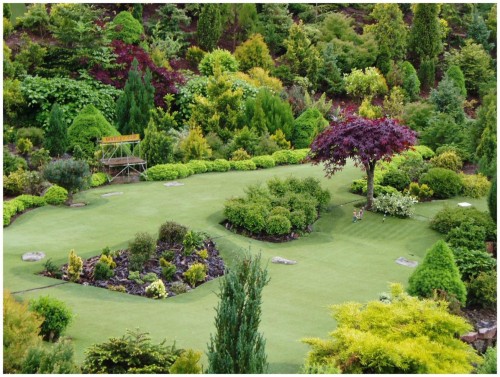
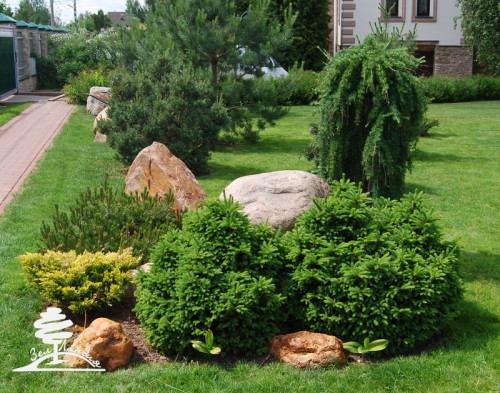
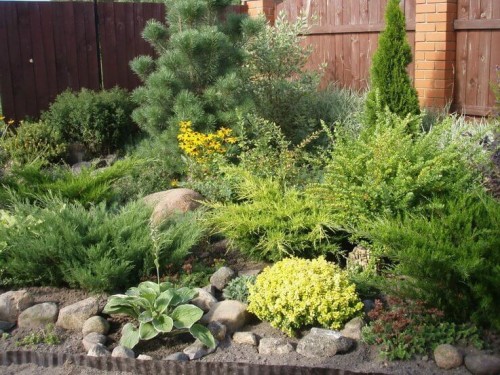
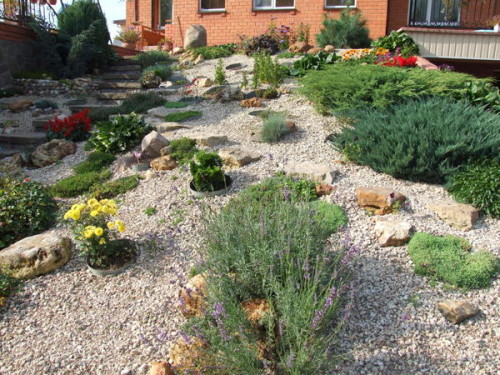
Ahuta ordinary is often used to form live elevations. It is easily cutting and growing, shadowed. Shrub retains neat branches to the earth itself. It looks spectacular when disembarking low borders. Another interesting way to use the variety Nidformis is considered roof gardening. It will not only decorate an unsightly surface, will make it evergreen, but will be resistant to the effects of the external environment.
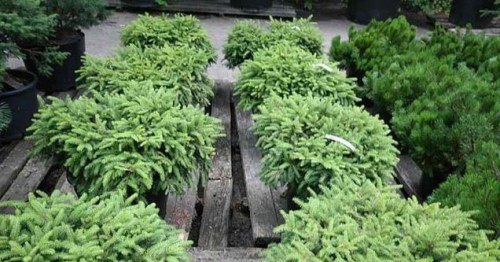
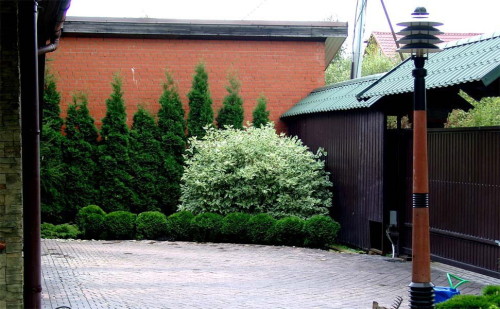
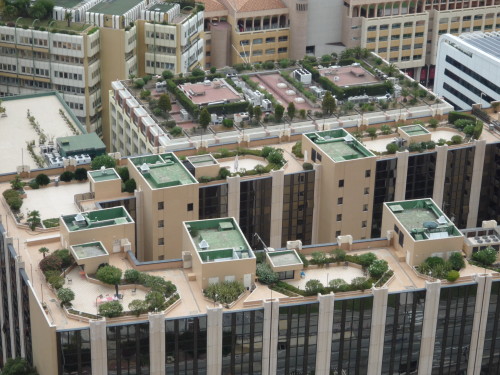
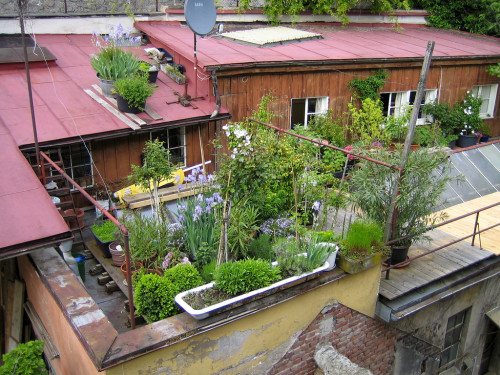
Grow a dwarf fir on its plot is very simple. It does not require severe care, frost resistant and unpretentious. Holding to the above recommendations, planting spruce will not be much difficult. This plant can independently decorate a small garden, become its highlight or supplement the composition from other plants. We offer to help beginner gardes. We offer to familiarize yourself with the video instruction from an expert on landing and caring for fir.

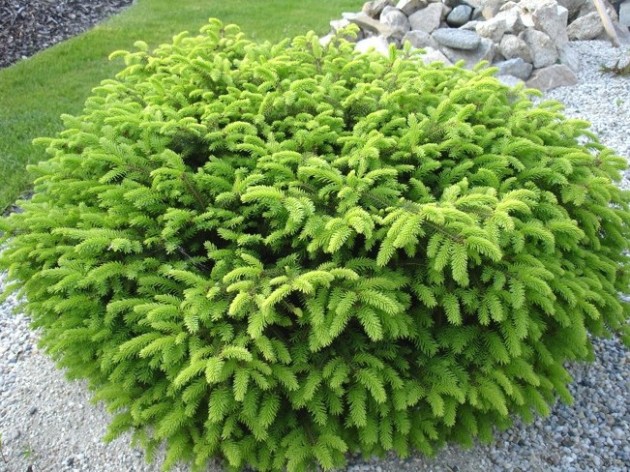












 Start a discussion ...
Start a discussion ...